Introduction

Value, frugal, reliable and typical. These are some of the terms commonly uttered by those who have ridden a Bajaj Discover. I’ve, in fact, even used those adjectives after a quick ride on one of the smaller displacement Discover models – the 100T. Since the launch of the first model in 2004, the Discover range of motorcycles has come a long way, with Bajaj making constant improvements and introducing newer models over the course.
Continuing with this approach of catering to the ever escalating two-wheeler commuter segment, Bajaj has now added two new models to the Discover family – the 150F and the 150S. Both these new models mark a strategic shift for the Discover brand which, in the recent past, has lost ground to Honda and its Dream series of commuter motorcycles.
We had a quick ride aboard the 150F and the 150S to see if the most powerful Discover yet, offers a significant value addition to Bajaj’s popular commuter motorcycle range.

Design

First up, the Design. It’s modern. There’s no two ways about it. The Discover 150S looks every bit as stylish as the latest Discover range consisting of the 100M, the 125M and the likes. It features the same chunky mudguard at both ends, a stylish single-piece headlamp and minimalistic bodywork; Having said that, it’s the Discover 150F which is more intriguing mainly because of its semi-faired design – the first to be introduced in the 150cc commuter segment.
This bike is eighty per cent Discover 150S. The major difference here is its half fairing. It loses out on the typical bikini fairing that is featured in the Discover range. Now this is a very good decision taken by Bajaj R&D engineers because adding a half fairing not only makes the 150F look more premium, but also differentiates it from the rest of the range, which has received heavy criticism in the past for its familiar family design.

The faring is neatly integrated into the overall design and doesn’t look out of place. Though oddly enough, the panel which links the fairing and the fuel tank is finished in black, making the whole assembly look incomplete. Even a small piece of decal would have solved this. Side panel onwards both these models share the same design. Everything right from the indicators, saree guard, chain cover and the LED taillights are shared.
All in all, the new Discover 150 range is fairly smart looking, one that makes its visual statement with the all-black theme (for the engine and drive-train components) and the crisp, clean lines on smooth flanks. To me it resembles a bit too much of the smaller-engined models from the same breed, but that is not necessarily a bad thing. For someone looking to buy a stylish, entry-level city runabout, both the Discover 150F and the 150S make for a compelling choice.

Engine and Gearbox

Putting both these new models in motion is a 145cc, single cylinder engine. Featuring a four valve head, this bored out version of the 125ST’s engine develops 14.5bhp of power at 8,500 rpm and 12.7Nm of torque at 6,500rpm. Although there’s not much to get excited about with this four-stroke unit, it is interesting to note that this engine develops more power than the Yamaha FZ 2.0 and the Suzuki GS150R – two motorcycles that belong to a segment above the Discover and therefore are significantly more expensive.
Turn the key, thumb the starter button and this newly developed air-cooled engine comes to life without hesitation. There is still a tiny bit of engine vibration at idle, but unlike the Bajaj’s models from the distant past, it doesn’t feel like it's going to rattle itself apart. Once on the move, the engine expectedly is a bit slow to pick up revs but the power plant does a great job of delivering a jerk-free spread of power. The Discover will happily crawl along at walking pace, and twisting the throttle will give smooth progress right though the gears, all thanks to the impressive flexibility of its engine which has enough power in reserve to cruise capably at 80kmph. But once past 95kmph, the motor is spinning very close to the redline, at which point peg-tingling vibrations are inevitable. This is further pronounced in the 150F wherein the entire fairing assembly gets very buzzy at the upper end of the rev range.
I was easily able to coax both the 150F and the 150S up to triple digit speeds when tucked over the tank, however, by that point there is very little in terms of progress in acceleration. The Discover 150 is good for an indicated 110kmph, which will satisfy most riders stepping up from an 110cc or a 125cc commuter machine. More impressive is the 5-speed gearbox which works in a much smoother way compared to the ones found on previous generation Discover models. The shifts are really smooth with positive action in every gear. The short first and second gears make for quick getaways from stationary and overall, the 5-speed unit has a set of properly spread ratios to make the most of the 14 or so horsepower.
Over the engine sits a 10-litre fuel tank which is good enough for a 550-kilometre range with our observed fuel efficiency of around 55kmpl during the test. The claimed mileage, meanwhile, is rated at 72kmpl. Either way, overall running costs will certainly be quite low compared to other motorcycles from rival brands such as Yamaha and Suzuki.
Bajaj has kept the pricing really aggressive; making the Discover 150s apt for multiple segments. Its appeal, in fact, lies both in the 150cc segment and the entry-level commuter segment where we find featherweight 100cc and 125cc models. Now this can only work in favour of the Discover 150 which comes in at very little premium over the featherweight alternatives, and yet offers up plenty of performance for the money.

Ride and Handling

No real surprises from the Discover 150’s chassis: a basic semi-cradle frame supported by telescopic forks in the front and a single gas-charged monoshock at the rear. All considered, it adds up to a relatively light package with the motorcycle weighing just 130 kilogram. The semi-faired 150F weighs slightly more at 132 kilogram.
Commuter motorcycles inevitably do most of their running in the city and its out on the city streets where the Discover 150 behaves its absolute best. The blend of light weight, a linear power delivery and nicely spread gear ratios make it an easily manageable machine to tread through the traffic. Plus the high 795mm seat height and upright riding position gives you a good view of the road up ahead while doing so.
For a commuter motorcycle, the Discover 150 handles quite neatly despite the high-ish commuter stance and the narrow 80/100 front and 100/90 rear tires. Our test bikes were running on tubeless MRF Zappers which provided good grip even on soaking uneven roads. As for the ride quality, the Discover 150 rides just as well as the more expensive Pulsar 150 DTS-i. As it should be for a commuter, the ride isn’t stiff but absorbent and there is very little in terms of bounce on uneven roads. Overall stability is impressive too, with the motorcycle feeling fairly composed throughout the test.
The stopping power from the brakes is adequate but uninspiring. Up front is a 240mm single petal disc which demands a strong pull at the lever for optimum braking power. The rear, on the other hand, gets a 130mm drum brake. Both units work well to shed speed without any tendency to lock up. Bajaj is also offering a drum-only variant of the Discover 150S although we would suggest giving it a miss and opting for this front disc setup which works fairly effectively.

Instrument console and features

Despite its compact exterior dimensions and minimalistic bodywork, the Discover 150 is quite roomy, even for a six-foot tall rider. As is expected from this segment, the foot pegs are positioned low, allowing better accommodation for the riders’ knees as compared to sportier rivals like the Yamaha SZ and the Suzuki GS150. Thanks to the high stance, the reach to handlebars is easy and feels natural. The long saddle is comfortable and the material is grippy enough to keep your butt from sliding around under most riding conditions. Improving things further are the wide rear-view mirrors which work brilliantly to give you a good view of what’s behind.
The 150F boasts attractive and detailed instrumentation, especially for a budget commuter. A large analogue speedometer is paired with a small LCD panel that includes a digital fuel gauge, clock, odometer and a trip meter. Rather thoughtfully, Bajaj has also included a service due indicator to remind the users about scheduling the service when required. Other tell-tale bits include turn and neutral indicators along with battery indicator. A glowing Bajaj logo is a nice touch. However, it’s not all good news: the buttons to adjust the trip meters are poorly finished and take bit of an effort to use, as pointed out by Pratheek who was left with no choice but to call a few Bajaj officials to reset the meters. The 150S, on the other hand, retains the same binnacle used in lower displacement Discover models. The instrumentation is equally legible, with a large analogue speedometer and a fuel gauge.

Verdict

This is a tough one. While the Discover 150 twins do look and feel like a well put-together products, I’m not entirely convinced that they will eat into the market share of more expensive rivals from Japan. Yes, its 145cc engine will come in handy for those looking for an economical commuter packed with a reserve of power to enjoy their daily ride. Having said that, it still cannot match the quality or the feel-good factor in a segment filled with excellent choices.
Starting at Rs 51,720, the base 150S sits between the Honda CB Twister and the Yamaha SS 125 in terms of pricing. That makes it a 150cc motorcycle for the price of 110/125cc machines. The main trade-off is the drop in fuel efficiency, but if your commute involves highway travel, the Discover 150S will certainly make it quicker and comfortable.
The semi-faired 150F, on the other hand, costs Rs 58,700 and that makes it pretty good value compared to small displacement Discover models especially considering the fact that for Rs 6,000 extra over the 150S, it gets both fairing and disc brake. The performance isn’t quite different from the 150S, but it just makes more sense with superb styling and extra features that make it an acceptable and affordable option to premium 150cc motorcycles.

Gallery
1/31
Double Tap to Zoom











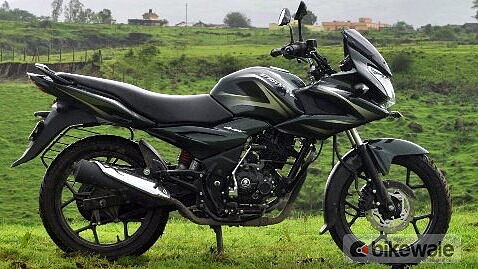















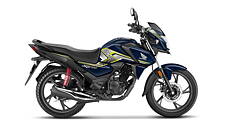












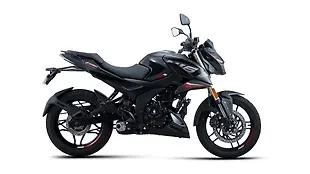
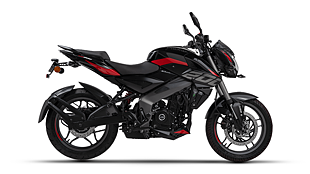
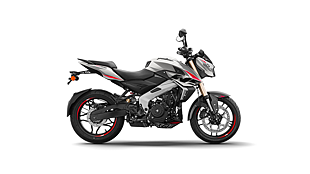





![KTM 390 Adventure X [2025] KTM 390 Adventure X [2025]](https://imgd.aeplcdn.com/272x153/n/cw/ec/190885/390-adventure-x-2025-right-side-view.jpeg?isig=0&q=80)